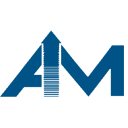Components of an auto policy
 Whether you are shopping for auto insurance for the first time or the hundredth time, it’s always best to be an educated shopper. Auto insurance is one of the most used types of personal insurance, so you’ll want to be in the know.
Whether you are shopping for auto insurance for the first time or the hundredth time, it’s always best to be an educated shopper. Auto insurance is one of the most used types of personal insurance, so you’ll want to be in the know.
Deciding on which auto policy is the best fit for you and your family depends a lot on your current household income, what kind of cars you drive and who is driving. The following coverages are the three most basic components of an auto policy:
- Bodily Injury (BI) Liability and Property Damage (PD) coverage is legally required in most states. Liability coverage is to protect the driver in the event that he or she is responsible for any type of a wreck, even if it is an accident or something small. To determine how much your policy should cover, talk to your insurance agent for their advice and expertise.
- Collision coverage covers damage to your car if you run into another car or object (e.g. fire hydrant, light pole, mailbox). If you cause an accident, collision coverage will pay to repair your vehicle. With most policies you must pay a deductible for this type of coverage. The higher the deductible, the lower the cost of the premium.
- Comprehensive coverage will assume the cost of damage to your vehicle caused by an event other than a collision (e.g. fire, theft, vandalism, encounters with wildlife, falling objects). Comprehensive is optional, though your bank may require it if you have a lien on the auto. You may choose your deductible on this coverage.
Having the proper coverage can save you thousands of dollars and quite a few headaches. If you have any questions on what coverage is best for you, your family or your car, talk with your insurance agent.

